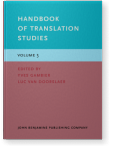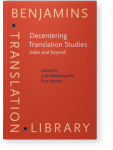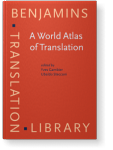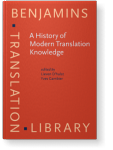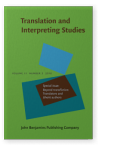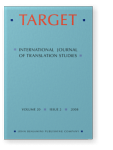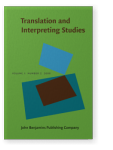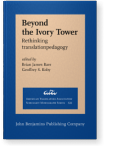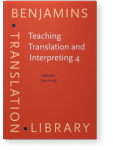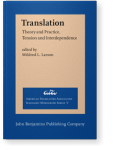Judy Wakabayashi
List of John Benjamins publications for which Judy Wakabayashi plays a role.
Book series
Online Resource
Title
Decentering Translation Studies: India and beyond
Edited by Judy Wakabayashi and Rita Kothari
[Benjamins Translation Library, 86] 2009. xi, 219 pp.
Subjects Discourse studies | Pragmatics | Translation Studies
2019 Chapter 3. Japanese conceptualizations of ‘translation’ A World Atlas of Translation, Gambier, Yves and Ubaldo Stecconi (eds.), pp. 55–80 | Chapter
Chinese characters were a crucial factor shaping translation praxis and attitudes in Japan, providing the foundation for a procedure (performed textually or mentally) known as kanbun kundoku (‘Japanese reading of Chinese text’) that allowed direct understanding of Chinese texts. This largely… read more
2018 Chapter 4.5. Connected history and histoire croisée A History of Modern Translation Knowledge: Sources, concepts, effects, D’hulst, Lieven and Yves Gambier (eds.), pp. 261–265 | Chapter
2018 Chapter 4.3. Microhistory A History of Modern Translation Knowledge: Sources, concepts, effects, D’hulst, Lieven and Yves Gambier (eds.), pp. 251–254 | Chapter
2016 Three-way transmesis in EnJoe Toh’s Matsunoe no ki Beyond transfiction: Translators and (their) authors, Ben-Ari, Nitsa, Patricia Godbout, Klaus Kaindl and Shaul Levin (eds.), pp. 381–397 | Article
The postmodern novella Matsunoe no ki (The Matsunoe family; or, Branches of the Pine, 2012) by the Japanese writer EnJoe Toh falls within the category of what Thomas Beebee (2012) calls “transmesis,” here taking the specific form of a metafictional and metanarrative exploration of author-translator… read more
2009 Introduction Decentering Translation Studies: India and beyond, Wakabayashi, Judy and Rita Kothari (eds.), pp. 1–16 | Article
2009 An etymological exploration of ‘translation’ in Japan Decentering Translation Studies: India and beyond, Wakabayashi, Judy and Rita Kothari (eds.), pp. 175–194 | Article
This exploration of the semantic domain of ‘translation’ in Japan focuses on the evolution and interrelationships of selected key terms, as well as on terminological discontinuities, potential terminological insights into Japanese views on translation, and how these terms differ from standard… read more
2008 Ben-Ari, Nitsa. 2006. Suppression of the erotic in modern Hebrew literature Target 20:2, pp. 384–388 | Review
2006 Translating in a forked tongue: Interlinear glosses as a creative device in Japanese translations Translation and Interpreting Studies 1:2, pp. 3–41 | Article
An intriguing contrapuntal device available to Japanese translators and writers is small-font glosses known as rubi, marginalia juxtaposed alongside words or phrases to fulfil a multitude of functions. Moving far beyond their original role of a phonetic aid, rubi are often used bivocally to produce… read more
2005 The Reconceptualization of Translation from Chinese in 18th Century Japan Translation and Cultural Change: Studies in history, norms and image-projection, Hung, Eva (ed.), pp. 121–145 | Article
2003 Think-alouds as a pedagogical tool Beyond the Ivory Tower: Rethinking translation pedagogy, Baer, Brian James and Geoffrey S. Koby (eds.), pp. 61–82 | Article
2002 Induction into the translation profession: Through Internet mailing lists for translators Teaching Translation and Interpreting 4: Building bridges, Hung, Eva (ed.), pp. 47–58 | Article
1991 The translator as editor: beginnings and endings in japanese-english translation Translation: Theory and Practice, Tension and Interdependence, Larson, Mildred L. (ed.), pp. 224–234 | Article
